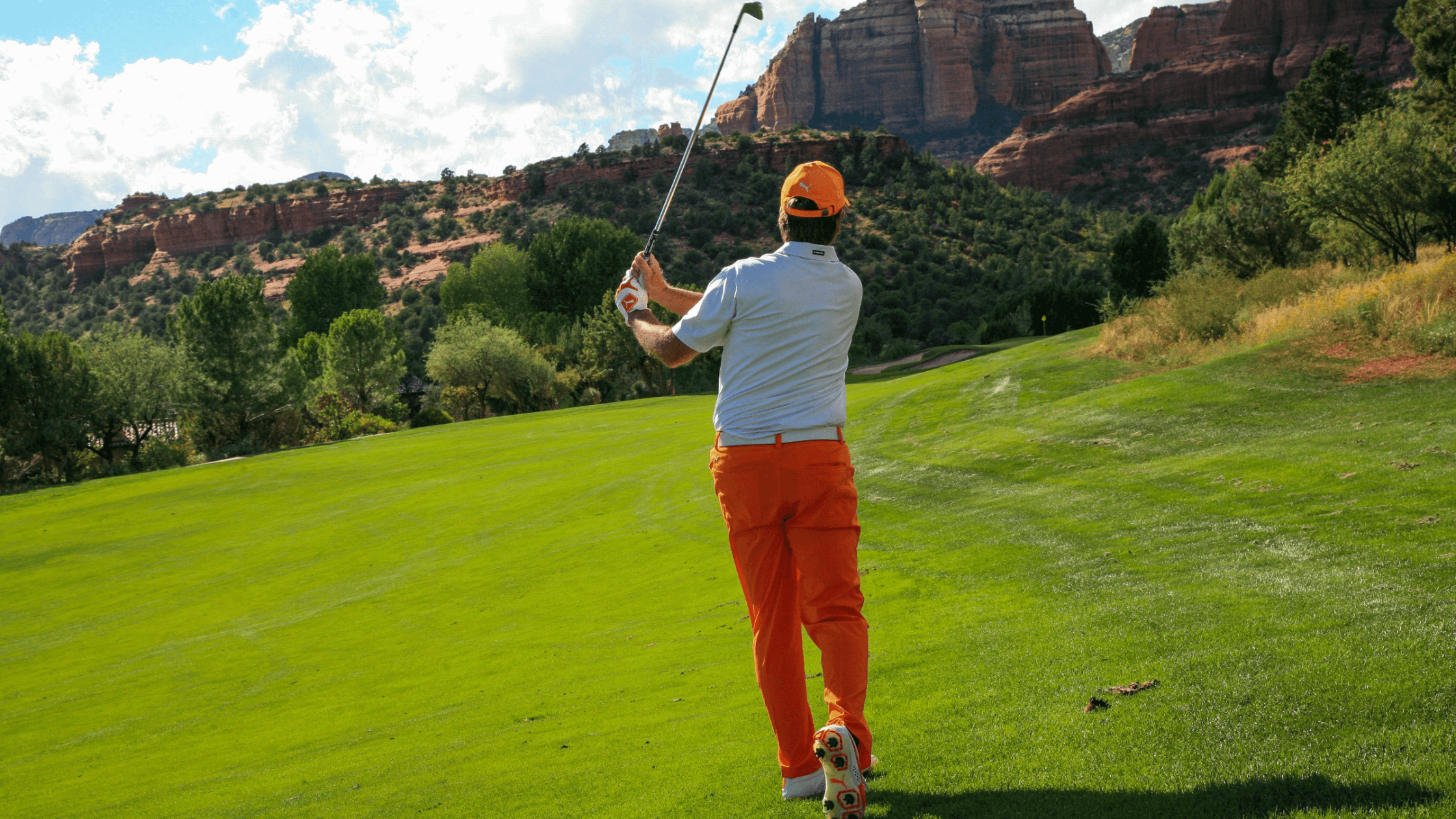Stretches For Golfers: How To Warm Up and Cool Down

Licensed Physical Therapist, PT, DPT // Dry Needling Certified // Titleist Performance Institute Certified // Director of Player Development, EW Golf // EW Motion Therapy Homewood // EW Motion Therapy Trussville
Golf is a sport that requires a combination of strength, flexibility, and endurance. Without proper preparation, golfers may suffer from injuries and decreased performance. Stretching is essential to any golfer's warm-up routine as it helps increase flexibility and prevent injuries. But what stretches should you do?
While many online resources are available, a professional like a physical therapist could give you personalized recommendations if you have specific joints or movements you want to address. Our golf team at EW Motion Therapy does just that - we watch you swing, identify mobility deficits, and help you craft a routine that improves your game. Even if you decide our services do not fit your needs, you can still read on for our discussion of why stretching is essential for golfers and how to build effective warm-ups and cool-downs.
Golf lessons can be a crucial step in a player's success. Get a good estimate of a price breakdown here.
Why is stretching necessary for golfers?
You might not think about stretching before or after hitting the course, but it can improve your game. Here are a few reasons why.
- Increased flexibility: Golfers need high flexibility to swing correctly. Tight muscles can restrict movement, reducing the golfer's ability to turn during the takeaway or through impact. Stretching regularly helps increase flexibility, allowing you to rotate more and generate more speed and power in your swing.
- Injury prevention: Golf is a sport that places a lot of stress on the body, particularly on the back, shoulders, and knees. A lack of flexibility can lead to injuries such as strains, sprains, and muscle pulls. Golfers often have swing speeds close to 100mph or more, thus a proper warm-up will prepare the muscles and joints for the intensity of a golf swing throughout the round.
- Improved performance: Flexibility and mobility are essential for a good golf swing. By stretching regularly, you can improve your range of motion, allowing for a more powerful and accurate swing. This, in turn, can improve your overall performance on the course.
- Relaxation: Golfers can experience tension and stress while playing, negatively impacting their game. Stretching can help reduce stress and tension, promote relaxation, and improve your mental state on the course.
How should golfers warm up before a round?
Golfers should focus on a dynamic warm-up, which uses movement to increase blood flow and take your joints through their full range of motion. Areas to focus on include your hips, low back, thoracic spine, and shoulders. Your hips and spine must be warm to rotate adequately and reduce pressure on your lower back. Then, once you get to the range, start with wedges and work your way up to drivers.
Here are some examples of warm-up techniques you could use before you hit the course.
- Jogging or bike ride: A light jog or stationary bike ride for about 5-10 minutes will increase the heart rate and blood flow, preparing the body for physical activity.
- Dynamic stretches: Dynamic stretches involve movement and are excellent for warming up the muscles. Here are some examples:
- Arm circles: Stand with feet shoulder-width apart and arms extended. Move arms in small circles, gradually increasing the size of the circle.
- Lunges: Take a large step forward, bending the front knee and lowering the back knee toward the ground. Repeat on the other leg.
- Squats: Stand with feet shoulder-width apart and squat, activating your upper glutes and ensuring your knees do not go past your toes.
- Practice swings: Take some practice swings to get the muscles used to swinging. Start with pitch shots, working through wedges to irons, ending with full driver swings. This can also help improve technique.
How should golfers cool down after a round?
Cooling down can often be as important as warming up since your cool-down begins your body’s recovery process. You can try massaging with a foam roller, massage gun, or even an ice bath, but whatever cool-down you choose can help to prevent stiffness and soreness after you play. Here are some cool-down techniques that golfers can include:
- Walking: A light walk for about 5-10 minutes will help reduce the heart rate and cool down the body.
- Static stretches: Unlike dynamic stretches, static stretches involve holding a stretch for a specific amount of time. Here are some examples:
- Hamstring stretch: Sit on the ground with one leg straight and the other bent. Reach forward towards the straight leg, feeling the stretch in the hamstring.
- Quad stretch: Stand with feet shoulder-width apart, bend one knee, and bring the heel towards the buttocks. Hold onto the ankle with one hand and maintain balance with the other.
- Shoulder stretch: Bring one arm across the chest, holding it with the other hand, and pull towards the body.
- Foam rolling: Foam rolling is an excellent way to release muscle tension and knots. Focus on tight areas, rolling back and forth on the foam roller.
Along with your cool-down routine immediately after a round, you should also implement good habits during your recovery, like healthy eating and proper sleep. These habits and stretching are crucial for golfers as they help increase flexibility, prevent injuries, improve performance, and promote relaxation. Incorporating a stretching routine into your warm-up and cool-down can significantly benefit your overall game.
If you play regularly, you might want some professional advice for developing a warm-up and cool-down that address your needs. This is where a physical therapist can come in - they can assess your movement patterns and determine deficits that you need to work on to reduce your injury risk. Our golf team at EW Motion Therapy does this daily for golfers of different levels. If you want to learn more about how to improve your distance, click the button below to download our free ebook.


